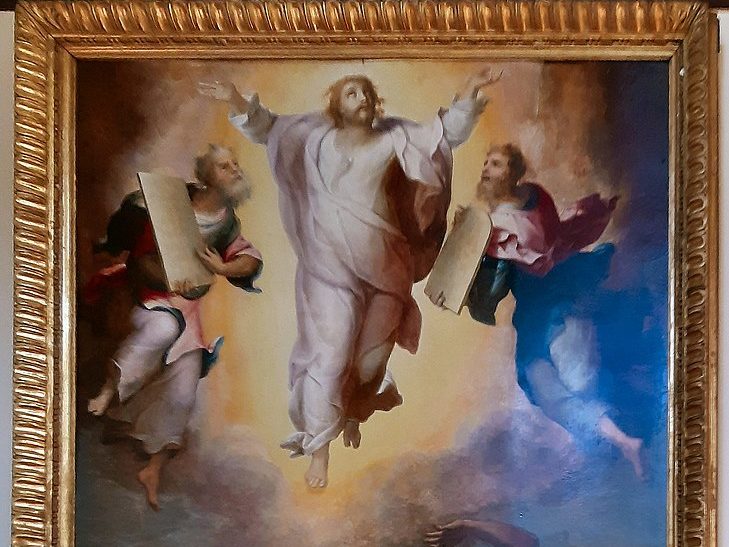Mark Twain observed that history doesn’t repeat itself, but it sure does rhyme. And it’s true. There is a discernible pattern to God’s self-disclosure in human events.
We read the Old Testament, and it seems to be a story in search of an ending.
We move on to the New Testament, and it seems to bring a sudden blossoming of 10,000 flowers that had been planted since the dawn of creation. Every story — from the Nativity to the Ascension — invokes many foreshadowing stories from the history of Israel.
Christians have always read the Old Testament in light of its New Testament fulfillment. When we go to Mass, our lectionary trains us to read this way. It’s built into the arrangement of the Scriptures.
The pattern is undeniable, and the study of this pattern is called typology.
Every time we celebrate a Christian feast day, the Gospel accounts beg us to find their Old Testament anticipation. And that’s abundantly true of the day we’re about to celebrate: the feast of the Transfiguration.
It commemorates an event that appears in three of the Gospels and in St. Peter’s second epistle. After predicting his passion, Jesus called his inner circle — his three most beloved disciples — and took them hiking up a high mountain. When they arrived at the top, the disciples saw Jesus transfigured in a glorious way, radiant and bathed in light. He was flanked by two of the greatest figures in history: Moses and Elijah. Jesus’ divinity was confirmed by the voice of the Father.
The vision overwhelmed the disciples. It was like nothing they’d ever seen. It was so glorious as to seem unprecedented in all of history.
And it may have been unprecedented, but it was not unanticipated.
In the Gospels we see Jesus choose 12 helpers whom he called apostles and then a further 70 disciples. But from the original 12 he selected three to receive intensive teaching: Peter, John, and James, the men who went with him to the Mount of Transfiguration.
But those details seem very familiar to anyone who has read the Old Testament. In the Book of Exodus (24:1) we see that Moses also chose 12 men from the 12 tribes of Israel; and he also chose 70 elders to assist him; and he chose three men in particular — Aaron, Nahab, and Abihu — to go up with him to the mountain of the Lord. Later on, Moses would be transfigured in prayer. His face glowed with divine glory so brightly that his companions could not even look at him (Exodus 34:30-35).
That moment marked a high point in the Exodus; and yet it prefigured a moment far greater: the fullness of salvation in Jesus Christ. Moses and Elijah, the Law and the prophets, were summoned as witnesses to that fulfillment.
This is the story of every Christian feast. The Law and the prophets come forward to testify that God has been preparing our salvation from the first moment of creation.

